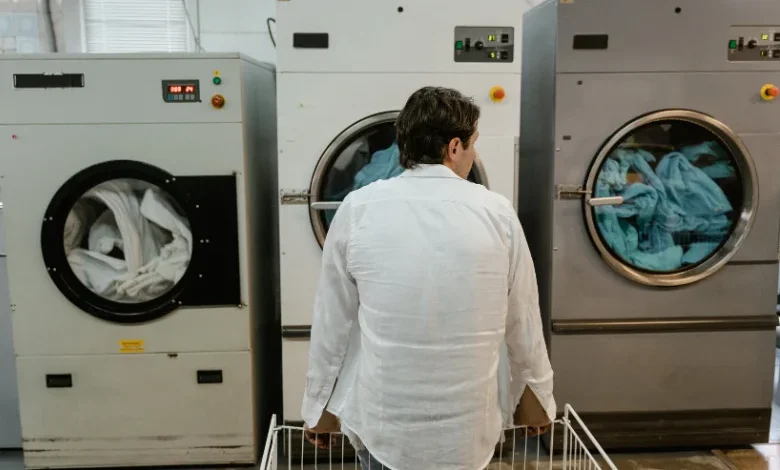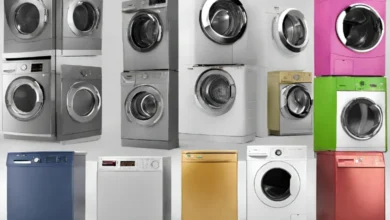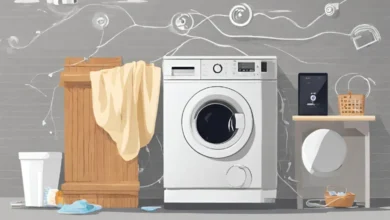Exploring the Dynamics: Steam Cleaning vs. Traditional Washing Methods

In the realm of cleanliness and hygiene, the decision between employing steam cleaning or traditional washing methods is a multifaceted consideration for individuals and businesses. With each approach bringing forth its unique advantages and considerations, factors like effectiveness, environmental impact, and overall convenience weigh significantly in the decision-making process. In this extensive exploration, we will delve into the intricacies of steam cleaning and traditional washing methods, meticulously examining the pros and cons of each to empower you in making an enlightened decision tailored to your specific needs.
Understanding Steam Cleaning
A. Mechanism of Action
Steam cleaning, at its core, harnesses the potent force of hot water vapor to sanitize and cleanse diverse surfaces. The primary instrument in this process is the steam cleaner, meticulously engineered to heat water to produce steam at elevated temperatures. This emitted steam is then judiciously applied to surfaces, effectively loosening entrenched dirt, grime, and bacteria. Beyond merely cleaning, the high-temperature action distinguishes steam cleaning as a method not only for hygiene but also for the thorough disinfection of surfaces.
B. Chemical-Free Cleaning
An outstanding attribute of steam cleaning lies in its capacity to achieve thorough cleaning without relying on additional chemical agents. The high temperatures generated by the steam alone prove remarkably effective in eliminating diverse forms of bacteria, viruses, and allergens. This makes steam cleaning particularly appealing for those who prioritize not only cleanliness but also a chemical-free approach to their cleaning solutions. This characteristic enhances the appeal of steam cleaning as a healthier alternative in various settings, spanning both residential and commercial spaces.
C. Eco-Friendly Considerations
The minimal reliance on chemicals positions steam cleaning as an environmentally conscious choice compared to traditional washing methods. The consequential reduction in chemical runoff contributes to a smaller ecological footprint, harmonizing with the burgeoning trend toward sustainable cleaning practices. The eco-friendly nature of steam cleaning extends beyond the immediate cleaning process, fostering a positive impact on the overall environmental landscape.
D. Versatility in Applications
The versatility of steam cleaning extends across a spectrum of applications. Beyond floors, this method proves adaptable to various materials, including upholstery, carpets, and certain clothing items. The multifaceted nature of steam cleaning equipment allows users to address an extensive range of cleaning needs with a singular, adaptable tool. This holistic approach enhances the utility of steam cleaning in maintaining cleanliness across diverse environments.
Also Read: Best Washing Machine in India
Unveiling Traditional Washing Methods
A. Detergent and Water Ensemble
Traditional washing methods, in stark contrast, lean on the timeless combination of water and detergent to wrestle with dirt and stains. This ubiquitous approach finds application in laundry, dishwashing, and general cleaning tasks, offering a versatile solution for an array of surfaces and materials. The efficacy of traditional washing methods hinges on the synergy between water and detergent, working collaboratively to break down and remove a multitude of contaminants.
B. Comprehensive Cleaning Spectrum
A cornerstone of traditional washing lies in its capacity to handle a broad spectrum of cleaning tasks. Formulated detergents excel in breaking down different types of substances, endowing traditional methods with the capability to tackle grease, stains, and various forms of dirt comprehensively. This expansive cleaning spectrum positions traditional washing as the go-to method for diverse cleaning needs, especially in scenarios demanding a thorough and comprehensive approach.
C. Environmental Considerations
While traditional washing methods wield robust cleaning capabilities, they often necessitate the use of chemical detergents, raising valid environmental concerns. Runoff from these detergents can contribute to water pollution and adversely impact ecosystems, presenting a challenge for those seeking greener cleaning practices. However, continuous advancements in detergent formulations have introduced eco-friendly options, ameliorating some of the environmental impacts associated with traditional washing.
D. Accessibility and Familiarity
An inherent advantage of traditional washing methods lies in their wide accessibility and familiarity. The use of water and detergent is deeply ingrained in daily routines, rendering traditional washing methods a convenient choice for individuals and businesses alike. The familiarity with this method also translates into ease of use, demanding a minimal learning curve when compared to certain specialized steam cleaning equipment.
Comparative Analysis
A. Effectiveness
When scrutinizing the effectiveness of steam cleaning versus traditional washing methods, a nuanced evaluation is imperative. Steam cleaning excels in disinfection and proves particularly effective on surfaces where chemical residues are undesirable. Conversely, traditional washing methods offer a broader spectrum of cleaning applications, rendering them suitable for a diverse array of tasks. The efficacy of each method hinges on considerations such as the nature of contaminants and the targeted surfaces.
B. Environmental Impact
Environmental impact stands out as a pivotal factor in the decision-making process. While steam cleaning is generally perceived as more eco-friendly due to its reduced reliance on chemicals, strides in developing eco-friendly detergents mitigate some of the environmental concerns associated with traditional washing methods. Decisions may involve a trade-off between immediate environmental impact and the long-term sustainability of chosen cleaning practices.
C. Convenience and Accessibility
Convenience, a subjective metric, hinges on contextual use. Steam cleaning may demand specialized equipment, but its potential time efficiency in certain applications counters this. Traditional washing methods, deeply embedded in daily life and widely accessible, are often more convenient for routine cleaning tasks. Factors such as equipment availability, ease of use, and time required for cleaning tasks are pivotal in determining the overall convenience of each method.
Making an Informed Decision
A. Assessing Cleaning Needs
Before settling on steam cleaning or traditional washing methods, a meticulous assessment of specific cleaning needs is imperative. Contemplate the surfaces in question, the types of contaminants to be tackled, and any environmental or health considerations. A comprehensive assessment lays the groundwork for a clear understanding of cleaning requirements, guiding users toward the most suitable method for their unique circumstances.
B. Balancing Eco-Friendliness and Effectiveness
Striking a delicate balance between eco-friendliness and cleaning effectiveness is pivotal. Assess the trade-offs, weighing the environmental impact against the desired level of cleanliness for the given application. Advances in both steam cleaning technology and eco-friendly detergent formulations provide users with options to align cleaning practices with sustainability goals without compromising on effectiveness.
C. Adaptability to Different Surfaces
Surface compatibility emerges as a pivotal consideration. While steam cleaning excels on certain surfaces, traditional washing methods may prove more suitable for others. Understanding the compatibility of each method with different surfaces is crucial for optimal results. Factors such as material sensitivity, the presence of delicate finishes, and the overall condition of surfaces guide the selection of the most fitting cleaning method.
D. Cost Considerations
In addition to cleaning effectiveness and environmental impact, cost considerations assume paramount importance. Evaluate the initial investment required for equipment, ongoing maintenance costs, and the long-term sustainability of the chosen cleaning method. While steam cleaning may incur a higher upfront cost for specialized equipment, potential savings in water and detergent expenses, coupled with reduced environmental impact, contribute to the overall cost-effectiveness of the method.
Conclusion
In the ever-evolving landscape of cleaning methodologies, the choice between steam cleaning and traditional washing methods is nuanced and dependent on various factors. Both approaches offer distinct advantages, and the decision should be guided by an understanding of unique cleaning requirements, environmental considerations, and the balance between effectiveness and eco-friendliness. Armed with this comprehensive analysis, individuals and businesses can confidently choose the method aligning with their values, ensuring a clean, healthy environment. The detailed exploration provided herein serves as a guiding beacon for those seeking to make informed decisions in






